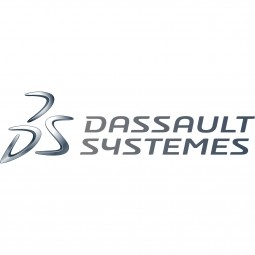公司规模
Large Corporate
地区
- Asia
国家
- India
产品
- 3DEXPERIENCE platform
- CATIA V6
- DELMIA
技术栈
- 3D Design Software
- Simulation Software
- Product Lifecycle Management
实施规模
- Enterprise-wide Deployment
影响指标
- Productivity Improvements
- Innovation Output
技术
- 功能应用 - 产品生命周期管理系统 (PLM)
- 功能应用 - 远程监控系统
适用行业
- 教育
适用功能
- 产品研发
用例
- 数字孪生
- 虚拟原型与产品测试
服务
- 培训
关于客户
Chitkara University is a privately-owned Indian university that provides students with a multi-disciplinary education. The university is located in Chandigarh, India, and has a student population of 12,000. The curriculum at Chitkara University includes business and hotel management, nursing, medical laboratory technologies, computer science, engineering, and architecture. The university is renowned for its student-centric approach and focus on innovation and entrepreneurship. It encourages students to participate in extra-curricular activities that benefit society and has created the “Innovation Box” on campus for students to submit their ideas for projects or inventions.
挑战
Chitkara University in Chandigarh, India, was faced with the challenge of providing its students with a multi-disciplinary education while encouraging initiative and entrepreneurship through projects and contests based learning. The university wanted to increase the employability of its students and enable them to design products that bring value to society. The university also wanted to help Indian companies gain a competitive advantage in the global marketplace by producing students proficient in technologies used globally. The university's student-centric approach and focus on innovation and entrepreneurship required a platform that could support these objectives.
解决方案
Chitkara University incorporated Dassault Systèmes’ 3DEXPERIENCE platform into its engineering curriculum. The platform is used by students in their curricular and extra-curricular activities to design and simulate their projects in a virtual environment. The university's professors have made teaching CATIA a fun experience by illustrating designs and simulations in a digital environment to show how products evolve from the earliest sketches to the finished model. The university also launched the LADDER program, created with the help of Dassault Systèmes and 3DS partner Tata Technologies, which is a step-by-step approach for developing engineering projects.
运营影响
数量效益

Case Study missing?
Start adding your own!
Register with your work email and create a new case study profile for your business.
相关案例.

Case Study
Revolutionizing Medical Training in India: GSL Smart Lab and the LAP Mentor
The GSL SMART Lab, a collective effort of the GSL College of Medicine and the GSL College of Nursing and Health Science, was facing a challenge in providing superior training to healthcare professionals. As clinical medicine was becoming more focused on patient safety and quality of care, the need for medical simulation to bridge the educational gap between the classroom and the clinical environment was becoming increasingly apparent. Dr. Sandeep Ganni, the director of the GSL SMART Lab, envisioned a world-class surgical and medical training center where physicians and healthcare professionals could learn skills through simulation training. He was looking for different simulators for different specialties to provide both basic and advanced simulation training. For laparoscopic surgery, he was interested in a high fidelity simulator that could provide basic surgical and suturing skills training for international accreditation as well as specific hands-on training in complex laparoscopic procedures for practicing physicians in India.

Case Study
IoT platform Enables Safety Solutions for U.S. School Districts
Designed to alert drivers when schoolchildren are present, especially in low-visibility conditions, school-zone flasher signals are typically updated manually at each school. The switching is based on the school calendar and manually changed when an unexpected early dismissal occurs, as in the case of a weather-event altering the normal schedule. The process to reprogram the flashers requires a significant effort by school district personnel to implement due to the large number of warning flashers installed across an entire school district.

Case Study
Implementing Robotic Surgery Training Simulator for Enhanced Surgical Proficiency
Fundacio Puigvert, a leading European medical center specializing in Urology, Nephrology, and Andrology, faced a significant challenge in training its surgical residents. The institution recognized the need for a more standardized and comprehensive training curriculum, particularly in the area of robotic surgery. The challenge was underscored by two independent studies showing that less than 5% of residents in Italian and German residency programs could perform major or complex procedures by the end of their residency. The institution sought to establish a virtual reality simulation lab that would include endourological, laparoscopic, and robotic platforms. However, they needed a simulator that could replicate both the hardware and software of the robotic Da Vinci console used in the operating room, without being connected to the actual physical console. They also required a system that could provide both basic and advanced simulation training, and a metrics system to assess the proficiency of the trainees before they performed surgical procedures in the operating theater.

Case Study
Edinburgh Napier University streamlines long-distance learning with Cisco WebEX
• Geographically dispersed campus made in-person meetings costly and inconvenient.• Distance-learning programs in Malaysia, India, and China required dependable, user-friendly online tools to maximize interaction in collaborative workspaces.• Virtual learning environment required a separate sign-in process, resulting in a significant administrative burden for IT staff and limited adoption of collaboration technology.

Case Study
8x increased productivity with VKS
Before VKS, a teacher would spend a lot of time showing a group of 22 students how to build a set of stairs within a semester of 120 hours. Along with not leaving the teacher much time to provide one-on-one support for each student to properly learn carpentry, it also left a considerable amount of room for error. Key information would be misinterpreted or lost as the class was taught in the typical show-and-tell way.

Case Study
Scalable IoT Empowering GreenFlex's Sustainable Growth
GreenFlex, a company that supports sustainable development, decarbonization, and energy efficiency, faced several challenges in its quest to expand its business. The company needed to deploy a robust and sustainable IoT technology to support its growth. It was crucial for them to monitor and control devices at customer sites in a safe and reliable manner. They also needed to integrate devices across a range of communication protocols and gather and act on data to meet efficiency targets. GreenFlex had previously built IoT capabilities into its digital platform, GreenFlexIQ, to monitor and manage customer sites remotely. However, they soon realized that they needed a new platform to support their ambitions. They needed a platform that could scale to connect more devices for production management and make it easier for the operations team to manage devices in the field.







